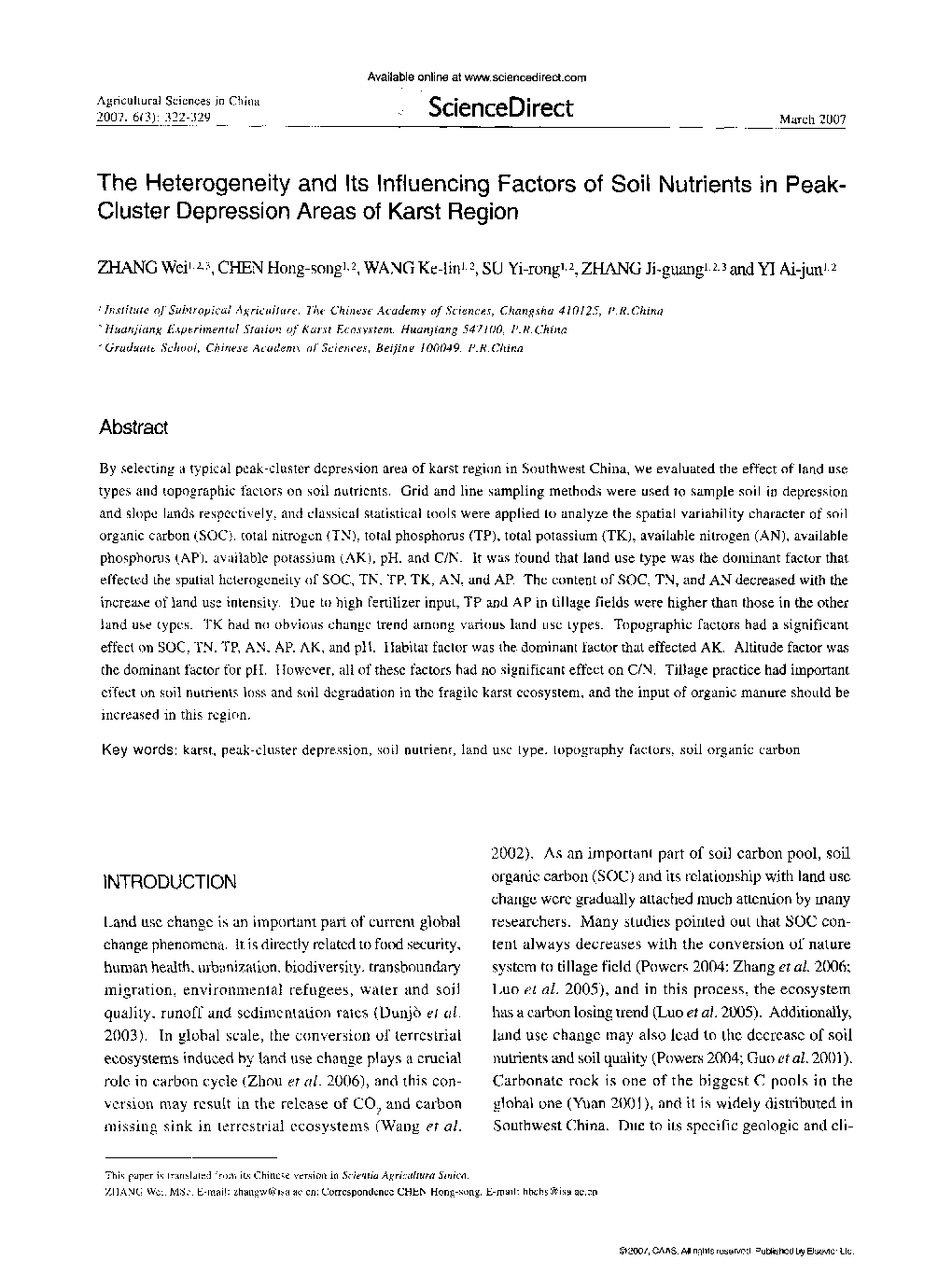| Article ID | Journal | Published Year | Pages | File Type |
|---|---|---|---|---|
| 4490918 | Agricultural Sciences in China | 2007 | 8 Pages |
By selecting a typical peak-cluster depression area of karst region in Southwest China, we evaluated the effect of land use types and topographic factors on soil nutrients. Grid and line sampling methods were used to sample soil in depression and slope lands respectively, and classical statistical tools were applied to analyze the spatial variability character of soil organic carbon (SOC). total nitrogen (TN), total phosphorus (TP), total potassium (TK), available nitrogen (AN), available phosphorus (AP), available potassium (AK), pH, and C/N. It was found that land use type was the dominant factor that effected the spatial heterogeneity of SOC, TN, TP, TK, AN, and AP. The content of SOC, TN, and AN decreased with the increase of land use intensity. Due to high fertilizer input, TP and AP in tillage fields were higher than those in the other land use types. TK had no obvious change trend among various land use types. Topographic factors had a significant effect on SOC, TN, TP, AN, AP, AK, and pH. Habitat factor was the dominant factor that effected AK. Altitude factor was the dominant factor for pH. However, all of these factors had no significant effect on C/N. Tillage practice had important effect on soil nutrients loss and soil degradation in the fragile karst ecosystem, and the input of organic manure should be increased in this region.
